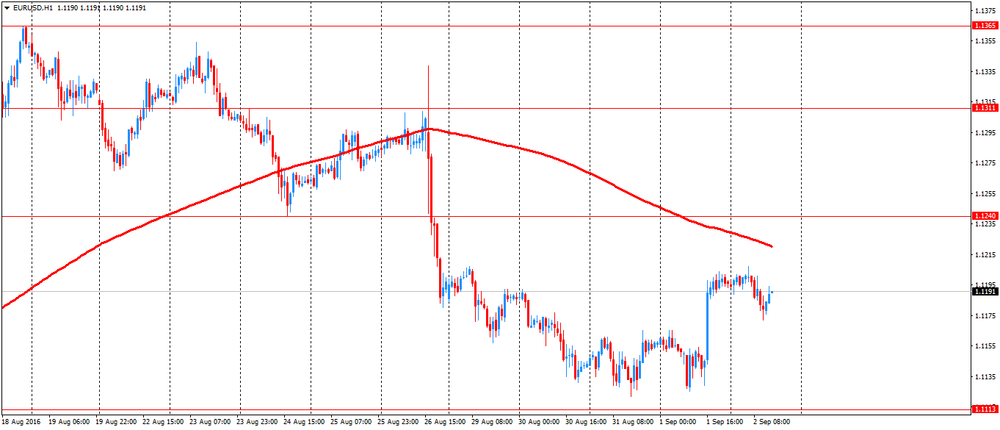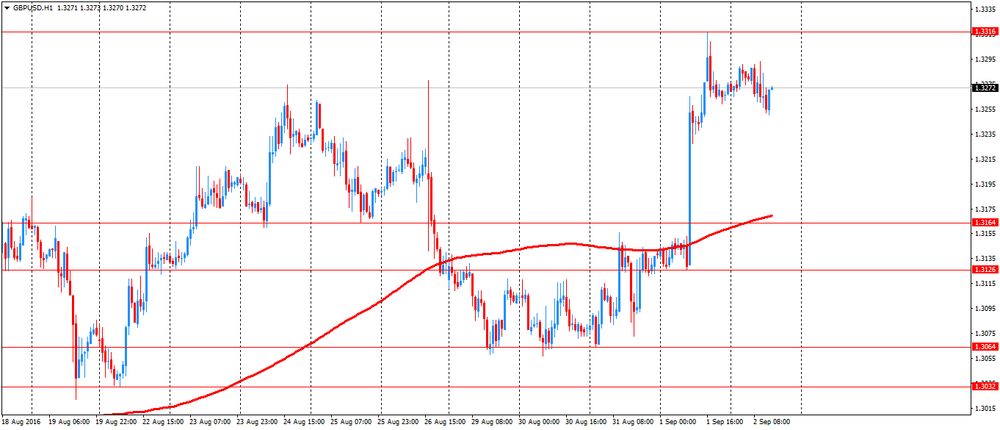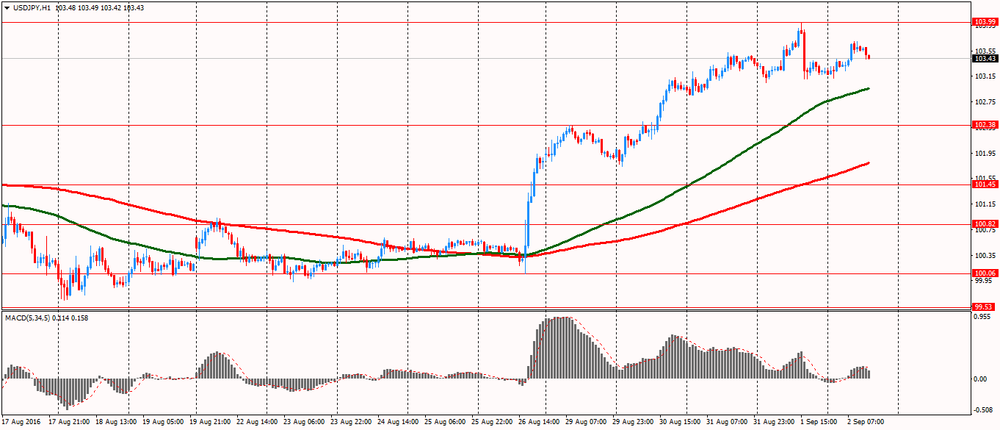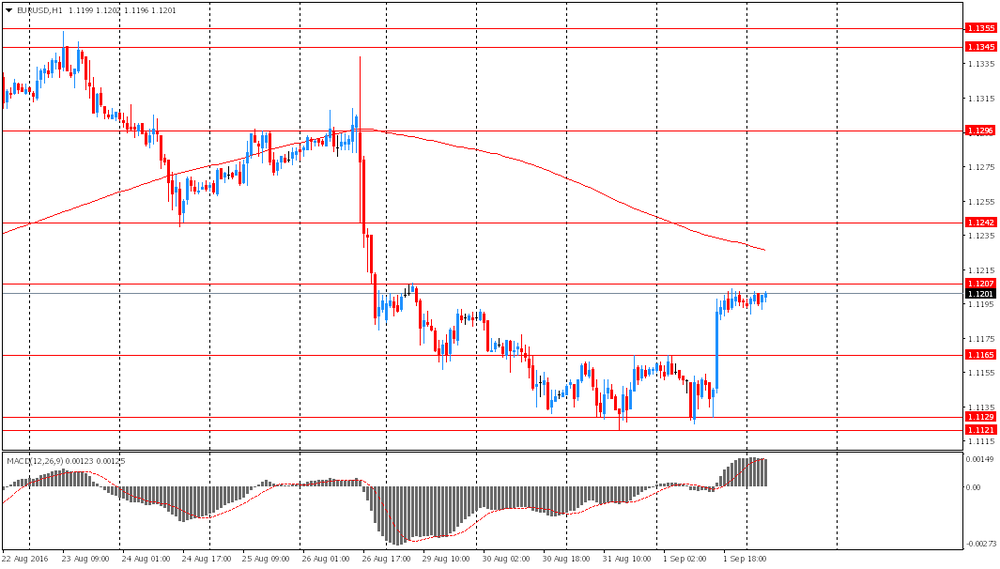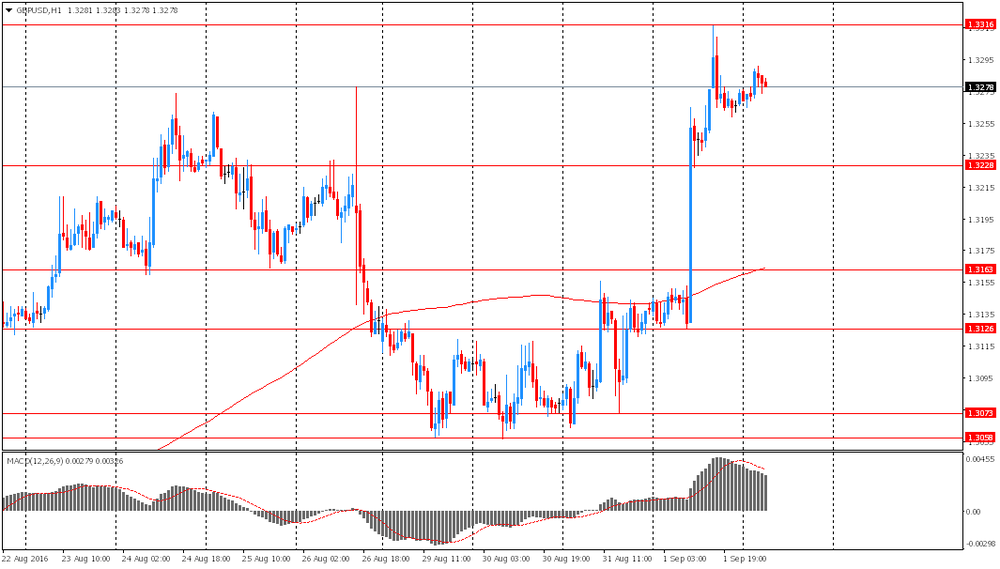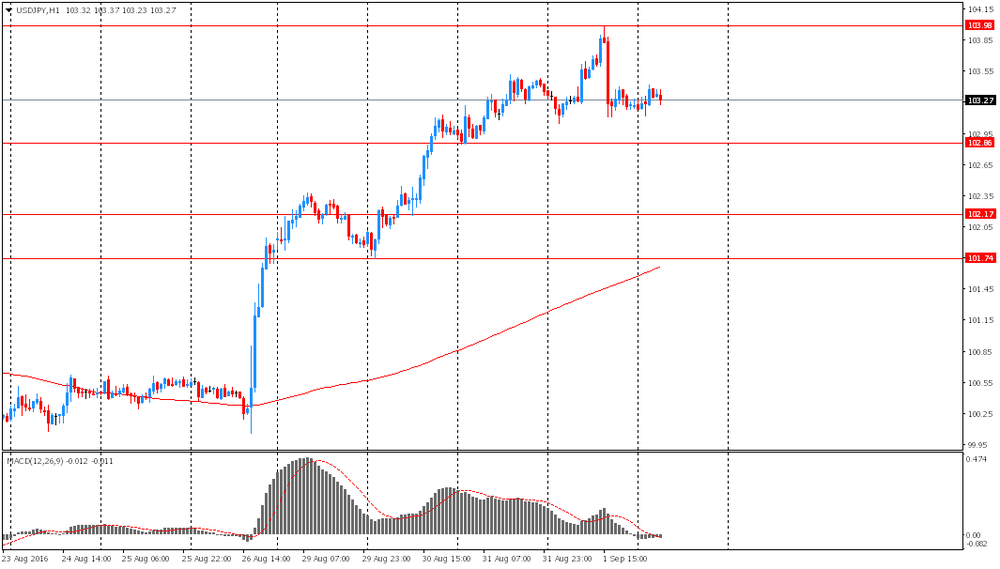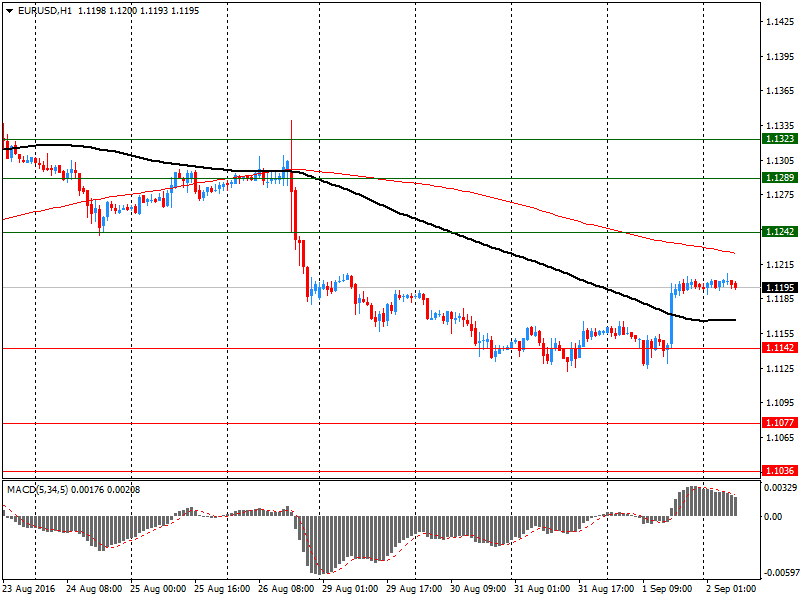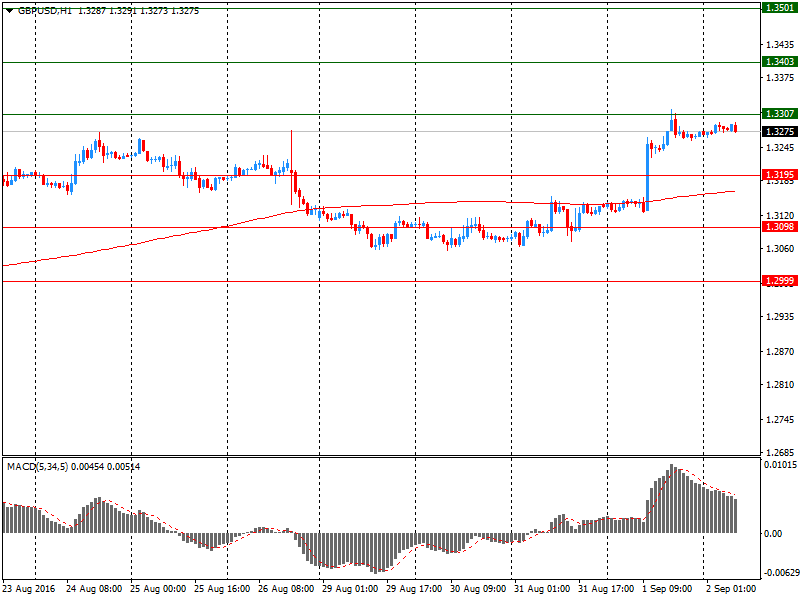Noticias del mercado
-
16:08
US: largest increase in factory orders in 9 months
New orders for manufactured durable goods in July increased $9.7 billion or 4.4 percent to $228.9 billion, the U.S. Census Bureau announced today. This increase, up following two consecutive monthly decreases, followed a 4.2 percent June decrease. Excluding transportation, new orders increased 1.5 percent. Excluding defense, new orders increased 3.8 percent.
Inventories of manufactured durable goods in July, up following six consecutive monthly decreases, increased $1.2 billion or 0.3 percent to $383.0 billion. This followed a 0.1 percent June decrease.
Revised seasonally adjusted June figures for all manufacturing industries were: new orders, $447.0 billion (revised from $447.4 billion); shipments, $460.2 billion (revised from $460.0 billion); unfilled orders, $1,127.4 billion (revised from $1,128.0 billion); and total inventories, $619.6 billion (revised from $619.1 billion).
-
16:00
U.S.: Factory Orders , July 1.9% (forecast 2%)
-
14:51
US trade balance improves in July
The U.S. Census Bureau and the U.S. Bureau of Economic Analysis, through the Department of Commerce, announced today that the goods and services deficit was $39.5 billion in July, down $5.2 billion from $44.7 billion in June, revised. July exports were $186.3 billion, $3.4 billion
more than June exports. July imports were $225.8 billion, $1.8 billion less than June imports.
The July decrease in the goods and services deficit reflected a decrease in the goods deficit of $5.3 billion to $60.3 billion and a decrease in the services surplus of $0.1 billion to $20.9 billion.
Year-to-date, the goods and services deficit decreased $0.5 billion, or 0.2 percent, from the same period in 2015. Exports decreased $63.7 billion or 4.8 percent. Imports decreased $64.2 billion or 4.0 percent. -
14:49
Labour productivity of Canadian businesses fell 0.3% in the second quarter
Labour productivity of Canadian businesses fell 0.3% in the second quarter, after increasing 0.4% in the first quarter. The decline occurred against a backdrop of temporary difficulties resulting from the wildfire in northern Alberta, which affected both output and labour.
The productivity decline in the second quarter reflected the fact that the decrease in business output was more pronounced than the decline in hours worked.
The productivity decline in the second quarter was attributable to goods-producing businesses (-0.9%). Labour productivity decreased in mining, quarrying, and oil and gas extraction (-0.6%) and manufacturing (-0.1%). On the other hand, productivity rose in utilities (+1.2%) and agriculture and forestry (+0.9%). Construction was virtually unchanged (+0.1%).
-
14:47
NFP below forecasts, market reaction uncertain so far
Total nonfarm payroll employment increased by 151,000 in August, and the unemployment rate remained at 4.9 percent, the U.S. Bureau of Labor Statistics reported today. Employment continued to trend up in several service-providing industries.
The number of unemployed persons was essentially unchanged at 7.8 million in August, and the unemployment rate was 4.9 percent for the third month in a row. Both measures have shown little movement over the year, on net.
The average workweek for all employees on private nonfarm payrolls decreased by 0.1 hour to 34.3 hours in August. In manufacturing, the workweek declined by 0.2 hour to 40.6 hours, while overtime was unchanged at 3.3 hours. The average workweek for production and nonsupervisory employees on private nonfarm payrolls decreased by 0.1 hour to 33.6 hours.
In August, average hourly earnings for all employees on private nonfarm payrolls rose by 3 cents to $25.73. Over the year, average hourly earnings have risen by 2.4 percent.
Average hourly earnings of private-sector production and nonsupervisory employees increased by 4 cents to $21.64 in August. -
14:31
U.S.: Nonfarm Payrolls, August 151 (forecast 180)
-
14:31
Canada: Labor Productivity, Quarter II -0.3% (forecast -0.4%)
-
14:31
U.S.: Average workweek, August 34.3 (forecast 34.5)
-
14:30
U.S.: Average hourly earnings , August 0.1% (forecast 0.2%)
-
14:30
U.S.: Unemployment Rate, August 4.9% (forecast 4.8%)
-
14:30
Canada: Trade balance, billions, July -2.49 (forecast -3.25)
-
14:30
U.S.: International Trade, bln, July -39.47 (forecast -42.7)
-
14:21
European session review: The markets are waiting for a very important NFP
The following data was published:
(Time / country / index / period / previous value / forecast)
8:30 UK index of business activity in the construction sector, m / m in August 45.9 46.1 49.2
9:00 Eurozone Producer Price Index m / m in July from 0.8% Revised 0.7% 0.1% 0.1%
9:00 Eurozone Producer Price Index y / y in July -3.1% -2.9% -2.8%
The British pound was trading almost flat against the dollar after a sharp rise the previous day. Today, investors evaluated data on the index of business activity in the construction sector.
UK construction sector registered a sustained reduction of business activity, but the rate of decline was only slight, showed Markit data.
Purchasing Managers Index from the Chartered Institute of Purchasing and Supply / Markit rose more than expected to 49.2 in August compared with a 85-month low of 45.9 in July. Last reading signaled the slowest rate of decline since the recession began in June.
Index value below 50 indicates a contraction in the sector. The index was forecast to rise to 46.1 was.
"The latest survey shows only a partial transition to stabilization, rather than a return to business as usual" said Tim Moore, senior economist at Markit.
The transition to stabilization correlated with more optimistic data on the UK manufacturing PMI for August, and gives us hope that in the short-term adverse fallout from the uncertainty of Brexit will be less severe than feared, Moore said.
The US dollar is rose slightly on the eve of employment data, which will help to assess the probability of a rate hike in September. Analysts at ING prefer "tactical long positions on the dollar" against the New Zealand dollar, the British pound and the Japanese yen, which are sensitive to changes in interest rates.
According to the consensus forecast of economists surveyed by the WSJ, the number of US jobs outside agriculture rose by 180 000. In August, ING expect an increase in the number of jobs at 150,000 and increase wages by 0.3% compared with the previous month. The consensus forecast assumes growth of wages by 0.2%. That should be enough to "spur the Fed's leadership," they say in ING.
Euro moderately weakened against the US dollar against the strengthening US currency and under the influence of data on producer prices in the euro area.
Eurozone producer prices continued to fall in July, but the rate of decline decreased for the third month in a row, according to Eurostat preliminary data released on Friday.
Producer prices fell by 2.8 percent year on year, after falling 3.1 percent in June. Economists had forecast a decline of 2.9 percent.
Compared with the previous month, producer prices rose 0.1 percent in July, after rising 0.8 percent in June, from a revised 0.7 percent. The last increase was in line with economists' expectations. Prices rose for the third month in a row.
EUR / USD: during the European session, the pair fell to $ 1.1172
GBP / USD: during the European session, the pair fell to $ 1.3250
USD / JPY: during the European session, the pair rose to Y103.70
-
13:59
Orders
EUR/USD
Offers : 1.1225-30 1.1250 1.1280 1.1300 1.1320 1.1350-55
Bids : 1.1170 1.1150 1.1120 1.1100 1.1080 1.1050 1.1030 1.1000
GBP/USD
Offers : 1.3300 1.3320 1.3350 1.3370-75 1.3390-1.3400 1.3420 1.3450
Bids : 1.3255-60 1.3230 1.3200 1.3175-80 1.3250 1.3120 1.3100 1.3080 1.3065 1.3050
EUR/GBP
Offers : 0.8450 0.8480 0.8500 0.8520-25 0.8535 0.8550
Bids : 0.8420 0.8400 0.8385 0.8370 0.8350 0.8330 0.8300
EUR/JPY
Offers : 116.20 116.50 117.00
Bids : 115.70 115.50 115.00 114.80 114.50 114.00 113.80 113.50
USD/JPY
Offers : 103.80 104.00 104.45-50 104.75 105.00 105.50
Bids : 103.20 103.00 102.80 102.50 102.20 102.00 101.80 101.65 101.50
AUD/USD
Offers : 0.7565 0.7580 0.7600 0.7625-30 0.7650 0.7680 0.7700
Bids : 0.7520 0.7500 0.7485 0.7450 0.7430 0.7400 0.7385 0.7350
-
13:27
Italian economy minister Padoan: Italy committed to target of lowering debt to GDP ration this year.
- several options including conversion of subordinated debt into equity are being studied for Monte de Paschi.
- G20 agreed on need for both private and public investments.
-
11:11
Producer prices in euro zone up 0.1% in July
In July 2016, compared with June 2016, industrial producer prices rose by 0.1% in both the euro area (EA19) and the EU28, according to estimates from Eurostat, the statistical office of the European Union. In June 2016 prices increased by 0.8% in both zones. In July 2016, compared with July 2015, industrial producer prices decreased by 2.8% in the euro area and by 2.5% in the EU28.
The 0.1% increase in industrial producer prices in total industry in the euro area in July 2016, compared with June 2016, is due to rises of 0.3% for non-durable consumer goods, of 0.2% for intermediate goods and of 0.1% for both capital goods and durable consumer goods, while prices fell by 0.4% in the energy sector. Prices in total industry excluding energy increased by 0.2%.
-
11:05
Putin: no plans to move away from floating rouble regime
-
restrictions on capital movements would be harmful
-
no need to hurry Rosneft sale
-
govt prepares for deal in 2016
-
there should be strategic investors for 19.5% stake in Rosneft
-
can not discriminate against any market players in Bashneft privatisation
-
-
11:00
Eurozone: Producer Price Index, MoM , July 0.1% (forecast 0.1%)
-
11:00
Eurozone: Producer Price Index (YoY), July -2.8% (forecast -2.9%)
-
10:39
UK's construction sector closer to stabilisation
UK construction companies indicated a sustained reduction in business activity during August, but the pace of decline was only marginal and much softer than the seven-year record seen during July. New order volumes also moved closer to stabilisation, with the latest reduction the least marked since May. This contributed to a renewed rise in staffing levels across the construction sector and a rebound in business expectations for the next 12 months. However, latest data indicated a further steep acceleration in input cost inflation. Purchasing prices rose at the fastest pace for just over five years amid reports that exchange rate depreciation had acted as a catalyst for increased charges among suppliers of construction materials.
At 49.2 in August, the seasonally adjusted Markit/CIPS UK Construction Purchasing Managers' Index® (PMI® ) remained below the 50.0 no-change threshold for the third consecutive month. However, the index was up from July's 85- month low (45.9), and the latest reading signalled the slowest pace of decline since the downturn began in June.
-
10:30
United Kingdom: PMI Construction, August 49.2 (forecast 46.1)
-
09:41
Option expiries for today's 10:00 ET NY cut
EUR/USD: 1.1000 (EUR 293m) 1.1100 (331m) 1.1125 (411m) 1.1150 (348m) 1.1180-90 (361m) 1.1200 (1.9bln) 1.1250 (293m) 1.1295-1.1300 (466m) 1.1400 (473m)
USD/JPY:101.00 (USD 2.25bln) 101.48-50 (766m) 102.00-05 (2.66bln) 102.20-30 (1.27bln) 102.50 (590m) 103.50 (385m) 104.00 (770m) 105.00 (772m)
GBP/USD: 1.3100 (GBP 882m) 1.3200 (234m) 1.3250 (246m)
AUD/USD: 0.7315 (AUD 342m) 0.7400 (790m) 0.7575-80 (638m) 0.7590 (1.07bln) 0.7600 (756m) 0.7640-50 (667m) 0.7700 (255m) 0.7717 (324m) 0.718m)
USD/CAD: 1.3045-55 (USD 638m) 1.3150 (230m) 1.3200 (515m) 1.3400-10 (836m) 1.3450 (500m)
NZD/USD 0.7200-07 (NZD 470m)
-
09:20
Today’s events
At 17:00 GMT a report by Baker Hughes on active oil rigs in the US
At 17:00 GMT a speech by Fed's Jeffrey Lacker
-
09:07
Asian session review: tight ranges in low activity
The yen was little changed in spite of statements of the Bank of Japan board member Makoto Sakurai. During his speech today Sakurai announced a number of different options for the purchase of new bonds and increasing the asset purchase program. However, the banker noted the absence of an acute need to run all of these mechanisms at the next meeting in September. "The Bank of Japan may make some technical changes to its monetary policy, however, is unlikely to change its attitude on the target inflation rate of 2% and nothing decisive at the September meeting" - said Sakurai. The official added that it is important for the regulator to analyze the effects of negative interest rates and the strengthening of the national currency.
The euro traded almost unchanged after yesterday's announcement of the ECB's Novotny. The official noted that the main reason for such low interest rates in the region is a negative situation in the European economy. "In the long term, low rates of economic growth will continue, and it is difficult to name the reason for this" - he said.
Today, investors' attention will focuse on key employment report in the US, which will be published today at 12: 00GMT. According to forecasts, the number of people employed in non-agricultural sectors grew in August at 180 thousand after increasing by 255 thousand. In July. The unemployment rate is likely to decline to 4.8% from 4.9%. The growth rate of the average hourly rate is estimated to have slowed to 0.2% from 0.3%.
EUR / USD: during the Asian session, the pair is trading in $ 1.1190-1.1205 range
GBP / USD: during the Asian session, the pair rose to $ 1.3290
USD / JPY: during the Asian session, the pair was trading in Y103.10-103.40 range
-
08:28
Options levels on friday, September 2, 2016:
EUR/USD
Resistance levels (open interest**, contracts)
$1.1323 (4359)
$1.1289 (4866)
$1.1242 (3122)
Price at time of writing this review: $1.1195
Support levels (open interest**, contracts):
$1.1142 (2701)
$1.1077 (4471)
$1.1036 (5855)
Comments:
- Overall open interest on the CALL options with the expiration date September, 9 is 52263 contracts, with the maximum number of contracts with strike price $1,1250 (4866);
- Overall open interest on the PUT options with the expiration date September, 9 is 58400 contracts, with the maximum number of contracts with strike price $1,1050 (5855);
- The ratio of PUT/CALL was 1.12 versus 1.11 from the previous trading day according to data from September, 1
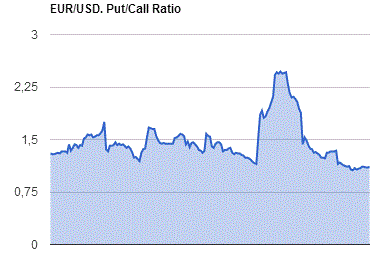
GBP/USD
Resistance levels (open interest**, contracts)
$1.3501 (2145)
$1.3403 (2525)
$1.3307 (2812)
Price at time of writing this review: $1.3275
Support levels (open interest**, contracts):
$1.3195 (743)
$1.3098 (1105)
$1.2999 (1876)
Comments:
- Overall open interest on the CALL options with the expiration date September, 9 is 33087 contracts, with the maximum number of contracts with strike price $1,3300 (2812);
- Overall open interest on the PUT options with the expiration date September, 9 is 27111 contracts, with the maximum number of contracts with strike price $1,2800 (2704);
- The ratio of PUT/CALL was 0.82 versus 0.81 from the previous trading day according to data from September, 1
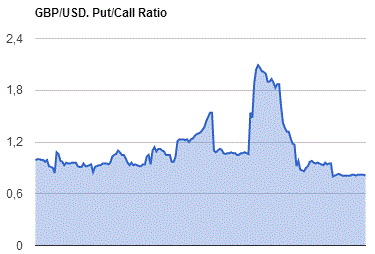
* - The Chicago Mercantile Exchange bulletin (CME) is used for the calculation.
** - Open interest takes into account the total number of option contracts that are open at the moment.
-
08:26
August NFP: Scenarios & FX Trades - RBS
"RBS US Desk Strategy Economics do not believe Friday's data will compel the Fed to act as early as September. Following hefty increases in each of the prior two months, they look for job growth to have settled back a bit in August, with overall payrolls expected to have advanced by 175k. The details (average hourly earnings and average workweek) are also expected to be soft. As normal, the jerk reaction will be on the headline jobs growth print. However, the lasting impact may depend on details, most obviously average earnings
Below we set out possible currency reactions to a range of payrolls outcomes.
260 and above | USD out-performance as markets become curious about a pair of 25bp hikes
Futures markets price September as a near certainty and prices in a far higher probability of a further 25bp in December. USD out-performs in the G4 space. The prospect of strong US (and global) growth is seen ultimately providing an offset for EM FX but not immediately. The immediate EM consideration is the return of the focus on EM deleveraging and FX debt given more abrupt Fed hike pricing. Short EUR/USD, long USD/JPY, long USD/MYR (1m NDF)
210-260 | Continuation of recent stronger USD theme
A solid report that has a material impact on the pricing of a single quarter point rate hike in 2016, particularly towards the higher end of the band. Perhaps September but more likely December. Long USD/JPY, long USD/KRW
165-210 | Consensus, focus turns to ECB and BoJ meetings
The consensus and RBS US Desk Strategy Economics expectation fall within this band. Only a modest incremental change (higher) in rates expectations, with perhaps December rising to be more likely than not. Reaction on the day may depend on details and ultimately on Fed speaker comments in coming days. USD consolidates. EUR/USD drifts lower. Neutral, to mildly positive for EM FX.
145-165 | Vol suppressor
A volatility suppressing outcome. Re-establishment of carry positions. Mild EUR/USD retracement (higher) and short USD/INR
50-145 | Profit-taking in USD longs
Still in line with labour force growth, but little reason for the FOMC to act quickly with CPI and wage pressure subdued. Gives Yellen an opportunity to return to her preferred habitat of low rates for potentially much longer. Also a number that could be seen as consistent with a late economic cycle move, suggesting a very low terminal rate. Fed tightening off the table for September entirely.Profit-taking on recent established JPY shorts. There may be more concerns about global growth. Short USD/JPY, Long JPY/KRW".
Copyright © 2016 RBS, eFXnews™
-
08:22
Japan consumer sentiment strengthened more than expected in August
Japan consumer sentiment strengthened more than expected in August, survey data from the Cabinet Office showed Friday.
The consumer sentiment index rose to 42.0 from 41.3 in the prior month. The score was expected to improve to 41.8.
Among components, the index measuring income growth rose by 0.5 points to 40.9 in August. Similarly, the gauge for overall livelihood improved slightly by 0.4 points to 40.9.
The index for willingness to buy durable goods gained 0.2 points to 41.5. At the same time, the employment index climbed 1.5 points to 44.5.
The survey was conducted among 8,400 households on August 15, rttnews notes.
-
08:21
Board member of the Bank of Japan, Makoto Sakurai: There are plenty of opportunities to purchase new bonds and increasing the asset purchase program
During his speech today Bank of Japan board member Makoto Sakurai announced a number of different options for the purchase of new bonds and increasing the asset purchase program. However, the banker noted the absence of an acute need to run all of these mechanisms at the next meeting in September. "The Bank of Japan may make some technical changes to its monetary policy, however, is unlikely to change its attitude on the target inflation rate of 2% and nothing decisive at the September meeting" - said Sakurai. The official added that it is important for the regulator to analyze the effects of negative interest rates and the strengthening of the national currency.
-
08:18
The monetary base in Japan surged 24.2 percent
According to rttnews, the monetary base in Japan surged 24.2 percent on year in August, the Bank of Japan said on Friday - coming in at 400.998 trillion yen.
That's down from 24.7 percent in July, and it marks the slowest rate of growth in more than a year.
Banknotes in circulation added an annual 5.7 percent, while coins in circulation gained 1.1 percent.
Current account balances spiked 32.0 percent, including a 30.9 percent jump in reserve account balances.
The adjusted monetary base climbed 28.3 percent to 400.793 trillion yen.
-
07:01
Japan: Consumer Confidence, August 42 (forecast 41.6)
-
00:28
Currencies. Daily history for Sep 01’2016:
(pare/closed(GMT +3)/change, %)
EUR/USD $1,1196 +0,35%
GBP/USD $1,3274 +1,02%
USD/CHF Chf0,9797 -0,38%
USD/JPY Y103,22 -0,13%
EUR/JPY Y115,57 +0,22%
GBP/JPY Y137,01 +0,91%
AUD/USD $0,7549 +0,48%
NZD/USD $0,7293 +0,67%
USD/CAD C$1,3092 -0,11%
-
00:00
Schedule for today, Friday, Sep 02’2016
(time / country / index / period / previous value / forecast)
05:00 Japan Consumer Confidence August 41.3 41.6
08:30 United Kingdom PMI Construction August 45.9 46.1
09:00 Eurozone Producer Price Index, MoM July 0.7% 0.1%
09:00 Eurozone Producer Price Index (YoY) July -3.1% -2.9%
12:30 Canada Trade balance, billions July -3.63 -3.25
12:30 Canada Labor Productivity Quarter II 0.4% -0.4%
12:30 U.S. Average workweek August 34.5 34.5
12:30 U.S. International Trade, bln July -44.51 -42.7
12:30 U.S. Average hourly earnings August 0.3% 0.2%
12:30 U.S. Nonfarm Payrolls August 255 180
12:30 U.S. Unemployment Rate August 4.9% 4.8%
14:00 U.S. Factory Orders July -1.5% 2%
-
